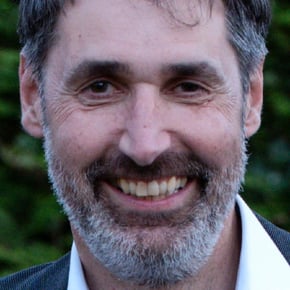Curiosity: The secret ingredient for growth
Stefaan Van Hooydonk, founder of the Global Curiosity Institute and author of The Workplace Curiosity Manifesto, knows exactly why curiosity is crucial in today’s fast-changing world. In this episode of The Relevance Podcast, he shares how organizations and individuals can train their “curiosity muscle” – and why this is the key to moving forward instead of standing still.
How curious were you 10 minutes ago? That might be a hard question to answer – but our guest Stefaan invites you to try anyway.
In this episode you can hear all about how you can grow your own curiosity by fostering a learning culture and to stay ahead in your field! And another thing to be curious about: what is Stefaan’s ‘gift to our listeners’?
Guests: Jim Morris (host) and Stefaan Van Hooydonk (founder of the Global Curiosity Institute and author of The Workplace Curiosity Manifesto)
Curiosity is a muscle
When Stefaan was Chief Learning Officer at Cognizant, he asked himself how to create a culture of self-directed learning. The big surprise? Simply telling people to “be curious” doesn’t work. He discovered that curiosity is like a muscle you can train. After short workshops on neuroplasticity and practical strategies, employees nearly doubled their learning hours.
Stefaan defines curiosity as: ‘The intentional mindset to challenge the status quo, explore, discover and learn.’ To him the revelation of the effects curiosity has on people and their learning behavior was enough to quit his job and start his own movement, the Global Curiosity Institute. He found that the average learning hours increased from 25 to 43 hours when people applied intentional curiosity.
“That was the moment I decided to leave my comfortable job and start the Global Curiosity Institute,” Stefaan says.
Why curiosity is more relevant than ever
“Curiosity is the intentional mindset to challenge the status quo, explore, discover, and learn.”
Curiosity used to have a bad reputation (“Curiosity killed the cat”), but since the 1950s that has changed. In the 21st century – where change is the only constant – curiosity is not a luxury but a necessity. Companies that don’t dare to ask “what if?” risk becoming obsolete, like Kodak, overtaken by more curious and innovative competitors.
“Curiosity is the spark for learning, growth, and innovation,” Stefaan explains. “Without that spark, you fall back into conformity – and that’s deadly in dynamic times.”
How to develop curiosity
Stefaan distinguishes three types of curiosity:
-
Intellectual curiosity (about the world)
-
Empathic curiosity (about others)
-
Intrapersonal curiosity (about yourself)
The last one – curiosity about yourself – is often the weakest, but it holds the greatest potential. “Once you truly know yourself, you’ll be much stronger in dealing with stress and uncertainty,” says Stefaan.
A simple exercise to start with? Ask the question: “How am I doing as your… (colleague, manager, friend)?” It requires vulnerability, but opens the door to deeper relationships and valuable insights.
Stefaan’s gift
Stefaan has two gifts for listeners:
-
Take the free Curiosity Diagnostic at globalcuriosityinstitute.com to discover your level of curiosity.
-
Ask someone today: “How am I doing as your…?” and experience what happens.
About The Relevance Podcast
The Relevance Podcast explores what it means for organizations and employees to stay relevant in today’s rapidly changing world. Our diverse speakers share their expertise alongside personal stories and real-world case studies. Their insights offer practical tips for both your work and personal life – now and in the future.



